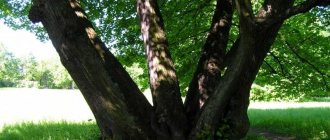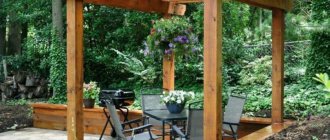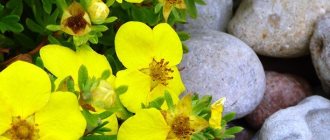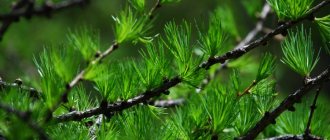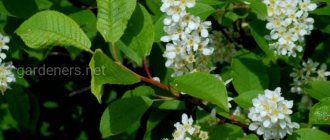Many people were able to see the pine blossom. This evergreen plant, instead of flowers, produces microstrobiles - boxes with “male” spores, which are located on the upper young shoots of adult trees. These formations do not have a persistent odor; they look like cones or spikelets. However, some other types of evergreens have bright, attractive blooms.
Does the pine tree bloom?
Pine is a coniferous crop that is classified as a gymnosperm, which means that it does not bloom like the usual apple or cherry trees. But it reproduces in the same sexual way, with the difference that the organs intended for this do not look like flowers, but like cones or ears of corn.
Most varieties that grow in Russia have a monotonous appearance. They are pollinated by the wind, so they do not have any distinct odor or bright petals that attract insects.
Did you know? Pine has long been valued for its special beauty. People used to say: “Where the pine tree grows, there it is red.”
Care after landing
Caring for a seedling consists of several key points:
- Watering. Young pines need deep weekly watering. You need to pour 3-5 buckets of water under the tree. Mature pines are not so demanding when it comes to watering. But it is still recommended to water them 3-4 times a season.
- Feeding. Feeding the pine tree is not a mandatory procedure, but in the first years of life it is desirable. Compost and mineral fertilizers are used as fertilizer.
- Weeding. The tree trunk circle should be regularly broken through and weeded. Weeds should not be allowed to grow. As a preventative measure, you can mulch the ground around the pine tree with peat, crushed conifer bark and dry leaves.
- Trimming. In order to give the tree the desired aesthetic shape, you can trim the pine tree. In order to make the crown thick and lush, the ends of the shoots are pinched. This should be done in late spring - early summer.
- Preparing for winter. Before the onset of winter cold weather, the ground around the young tree is mulched with 5–10 centimeters of peat. This helps protect the root system of the seedling from frostbite.
Flowering period
Pine blossoms at the beginning of spring, when other trees do not yet have leaves - just when there are no obstacles to pollination. At this time, large clouds of yellow pollen can be seen in the forests. After the rain, pollen descends to the ground and lies in a thick yellow layer - this is why people sometimes suspect that sulfur rain has occurred here.
Flower shoots appear in April, but the spikelets themselves appear only at a temperature of +20°C. Flowering mainly depends on the weather: if spring comes late and it’s cool around, then there won’t be any cones on the pine tree until it gets warmer.
Larch
The beautiful larch has chosen the subpolar lowlands of Alaska, the mountainous areas of the USA, and the European Alps. Widely distributed in Canada, Russia, Mongolia. In Ukraine you can see European larch; it grows in the western Carpathians. Frost-resistant, fast-growing, light-loving plant. Pollinates in April.
This is the only type of conifer that dresses up in gold in the fall and sheds its needles for the winter.
Larch cones resemble roses.
How a pine tree blooms
The inflorescences of the tree are divided into male and female. Male ones look more like ears of corn, while female ones look more like small cones. The color of the inflorescences is inconspicuous: the spikelets are light yellow, and the cones are the same, only with a pink tint.
Did you know? Pine cones can be used as a simple hygrometer. The fact is that they are sensitive to changes in humidity: at high humidity they open, at low humidity they contract.
Almost all coniferous trees that grow in Russia have the same cones and spikelets. Flowering becomes especially noticeable when there are a lot of male inflorescences on the branches - they resemble burning candles. But such a phenomenon happens quite rarely.
Male and female inflorescences are on different branches. In addition, nature made sure that conifer needles do not interfere with pollination, which is why the inflorescences are located at the ends of the branches. In male ears there are pollen sacs, and it is in them that pollen is formed. And on the scales of female cones are seed buds.
Find out how to plant a pine tree in your summer cottage.
Ordinary
The most popular coniferous plant in the Russian Federation is Scots pine. Cones and ears begin to bloom in late spring or early summer; During this period, new needles appear on the tree. The color of male inflorescences is yellowish, and the female ones are pale pink.
Thanks to a strong wind, pollen settles on the female seed scales and is glued together with the help of resin. After this, the process of slow germination of pollen grains to the ovules occurs, leading to the appearance of seeds.
Important! To grow pine yourself, you need to collect cones and extract seeds from them, which ripen from August to October. It is best to take brown buds.
Veymutova
This plant lives in the mountains. It blooms in early April and finishes blooming at the end of May. The cones resemble small cylinders; they are similar to spruce inflorescences, but a little larger. Weymouth pine has many subspecies, which are distinguished by cones, ears and pine needles.
Kedrovaya
Cedar is a huge noble tree that blooms in mid-autumn. Its lifespan is 3000 years. On one tree there can be both male and female reproductive organs, with the male ones looking like small barrels surrounded by pine needles, and the female ones being slightly larger and located in a bunch. Their size reaches 10 cm. When flowering, female cones open their scales, which allows pollen to penetrate inside and fertilize them.
Mountain
Mountain pine blooms from May to June. Flowering similar to Scots pine. Male ears are yellow, and female ears are purple. The cones are ovoid or round in shape, light brown in color. There are 3-4 pieces on a branch, they open in winter. The tree begins to bloom early, at about 6–9 years old, and bears fruit every year. Seeds begin to grow at a temperature of +18...+20°C.
Types of pine trees
Today, approximately 124 species of these beautiful coniferous trees are known to exist. But all pine trees bloom alike. Let's look at the most popular varieties of this conifer:
Scots pine
Inflorescences appear in May-June. At the same time, the plant produces young needles. The color of male flowers is bright yellow, female flowers are pinkish. The flowers are placed at the tips of the branches, so nothing interferes with their pollination.
Cedar pine
The beginning of flowering coincides with the beginning of flowering of the previous species. In general, the flowering of these two types of conifers is similar. The difference is the color scheme of the scales. It should also be remembered that pine pine and cedar are two different crops.
Weymouth Pine
This tree prefers mountainous areas. It blooms from mid-spring until early May. The cones are cylindrical in shape, similar to spruce ones, but much larger. There are many varieties of Weymouth pine, differing in needle structure, cones, flowers and distribution area.
Why do they say: “A pine tree in Yakutia blooms once every 100 years”
In Yakutia there is an original tree called protea. The plant's homeland is South Africa. Externally, Protea is very similar to pine, but in fact it belongs to the Proteaceae family. It is curious that it actually blooms only once every hundred years, but its flowers are very large, beautiful and bright.
Important! Sandy soil is best suited for growing pine trees.
Their size can reach up to 30 cm, and the color is mainly burgundy, cherry or light green . The fruits of this amazing plant look like small nuts with winged seeds.
So, the process of formation and distribution of pollen in coniferous plants can be called flowering only conditionally. But even without bright inflorescences, pine has a unique, austere beauty. It will become a decoration of the garden plot if you approach its cultivation responsibly.
Fir
There are more than 40 species of fir in nature. Most often, fir grows in mountainous areas of temperate latitudes with good humidity. Distributed in Europe, North and Central America, Asia, North Africa. Only one wild species grows in Ukraine - white fir. You can meet it in the Carpathians, the island massifs are located near Lviv.
The cones of this slender, graceful tree are extremely beautiful and vary from yellow to red, blue, green, and purple!
Korean fir cones.
Spruce
Common throughout Ukraine, Norway spruce has become not only a New Year's favorite for children, the heroine of fairy tales and songs, but also a real amulet. In the Carpathians, peasants tie a spruce branch over the door of their house so that the divine energy of the sacred Tree of Life descends on their home and family. It is quite possible that such a tree will decorate the territory of your school.
Evergreen spruce unites 50 species. The distribution area ranges from the subtropics to the temperate and cold regions of the Northern Hemisphere.
Take a closer look in the spring - on dark green branches, like New Year's candles, lilac-red buds of cones grow. Female cones are the size of a hazelnut, while male ones resemble a pea. In less than two weeks, the female cones will turn light green, stretch out, and hang down like miniature bunches of grapes.
Norway spruce (European).
Blue spruce Oldenburg.
And this is the exotic tree of Acrocon. The common spruce variety Akrokona was bred in Finland in 1890. The spruce grows slowly and has an asymmetrical shape. It looks interesting, especially in spring, when small bright red bumps appear at the tips of young shoots.
When to plant?
The pine root system lives without soil for a very short period of time, no more than 20 minutes.
The best time to plant pine with an open root system is early spring. The period when the winter snow has just melted is considered the most optimal. But it happens that the spring soil is still frozen, and with the onset of warmth the pine tree begins its biological activity.
The period of its revival is not the most favorable moment for planting. If such a case occurs, then it is better to postpone planting the pine tree until the fall, when its growth slows down and the tree begins to prepare for winter.
Previously, all coniferous trees with an open root system were planted only in the fall. At the present stage of technological development, planting has become possible at any time of the year. This is due to the fact that the sale of coniferous plants from the nursery is carried out only with the presence of an earthen coma on the root, which protects it from stress and unfavorable factors.
On a note!
A pine with an open root can only be planted at an early age, but a pine with an earthen lump on the root system even when it has reached a height of several meters.
Many gardeners think about planting pine trees on their property after the New Year holidays, when the time comes to throw away the cut down beauty. After all, every year every family throws out the New Year tree a couple of weeks after the holiday.
But by growing a tree on your property, you can simultaneously decorate your yard and save dozens of other pines from cutting down. In winter, planting an evergreen plant is allowed if the temperature does not drop below 5 degrees.
Cedar
You have already seen that coniferous cones come in incredible colors and shades. And cedar is no exception. The homeland of cedars is the Mediterranean and the Himalayas. And the Lebanese cedar is one of the symbols of Lebanon.
Himalayan cedar.
Cedar slate. Grows in China, Japan, Korea.
Growing from seeds
Pine seeds for planting are collected in the autumn. This is the time to collect cones from the trees you like and carefully bring them home. At home, place the collected material in a dry, warm place and wait until the scales open.
After opening them, the seeds will easily fall out of the cones. The best specimens should be selected from them. If you don’t want to wander through the forest looking for cones, you can buy seeds at the store.
Opinions about the need for stratification currently differ. It is not always possible to do it correctly at home, and not all types of pine trees need it.
Next, you must follow the instructions:
- Pour water over the seeds and leave for two days to germinate.
- Seeds that float to the surface are unsuitable for planting. Leave only those that have sunk to the bottom.
- Hold zircon or other growth stimulant in a solution (not necessary, but recommended).
- Lightly dry the seeds.
- Prepare pots with moistened soil. The soil should mostly consist of peat.
- Plant the seeds at a distance of two centimeters from each other.
- In the first week, water the soil where the planted seed is located daily, and then water as needed.
- After a year, the seedlings can be transplanted into separate containers, and planted in the soil only after 3–4 years, when the tree has become stronger.
